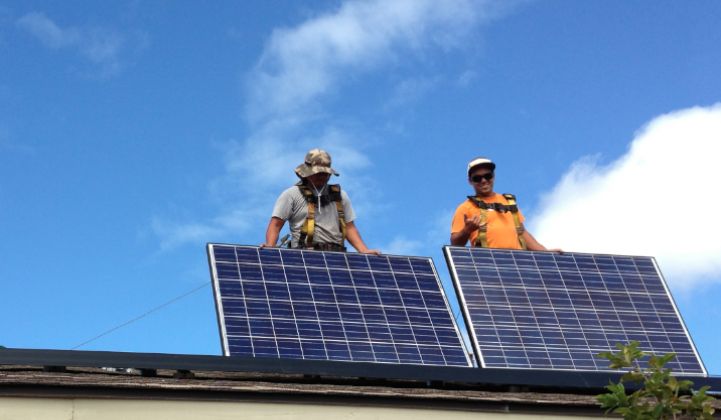Public safety power shutoffs have revitalized the California solar market, according to residential installer Vivint Solar.
The shutoffs have been pursued most recently — and most notoriously — by California utility Pacific Gas & Electric, but they have also been imposed on a more tempered basis by Southern California Edison and San Diego Gas & Electric.
Though Vivint sales representatives knock on “millions of doors a year,” CEO David Bywater said on the company’s Q3 earnings call that recent power outages have pushed many potential customers to reconsider renewables and storage.
“Every door is a fresh door again, because with time-of-use [rates] and these rolling blackouts, consumers who didn’t purchase in the past…are reevaluating this decision. It kind of resets the market,” Bywater said. “These conversations today are not only [about] going solar but also [considering] storage.”
Last month PG&E turned power off for millions of Californians in an effort to prevent wildfires from sparking. Despite the shutoffs, the utility is now under scrutiny for the possibility that its equipment caused the Kincade fire in Sonoma County, which has burned nearly 80,000 acres.
On Wednesday, Vivint reported 65 megawatts of quarterly installations, its highest quarterly figure so far in 2019. Revenue for the quarter came in at $104 million, up from $90.8 million in Q2, and gross retained value — which the company says is a good proxy for its value because it measures customer contract revenues and income from renewable energy credits — jumped $74 million from the previous quarter. While its revenue bested expectations, the company reported a net loss of $0.11 per share.
Though Bywater said the company anticipates growth in California, a state where it already claims the largest market share so far in 2019, any increase in demand from power shutoffs will take some time to materialize on the company’s balance sheet. When it does, Bywater expects the bump to stick around.
“I don’t think it’s just this year; I don’t think it’s just 2020. [With] these challenges happening right now in California, people are looking for long-term solutions,” Bywater said. “We think it will drive growth for quite some time.”
For customers who can afford it, the current reality of weather-prompted power shutoffs has widened the appeal for solar and storage systems as a hedge against outages. On its Q3 earnings call, SunPower said it expected future storage attachment rates of 20+ percent, and perhaps even higher in California. Sunnova on its Q3 call also noted stronger demand for storage tied to natural disasters and California’s wildfires specifically.
“There’s been a heightened desire by consumers to take control and not rely solely upon local utilities. [...] It’s been a very busy season,” said Bywater on Vivint’s Wednesday call. “Unfortunately for the consumers...there’s more contextual reasons for them to consider what we do both on the solar and the energy storage than ever” before.
“We love the residential market...because we’re able to help consumers become co-investors in the solution,” Bywater added.
Distinguishing itself from its peers, Vivint on Wednesday also detailed plans to qualify projects for the full 30 percent Investment Tax Credit using the “physical work test” — a first for a residential installer as far as GTM is aware. That provision requires a developer to undertake “physical work of a significant nature” either on- or off-site. The work can also be performed by a contractor.
Most solar developers originally planned to qualify for the ITC by safe-harboring 5 percent of the equipment and materials used in the installation.
While Vivint plans to buy 115 megawatts of panels for safe-harboring purposes, executives said on Wednesday that equipment would support installations only through part of 2020. The company expects the physical-work strategy to allow it to capture the full ITC through 2021.
According to CFO Dana Russell, engaging in physical work will “minimize upfront capital requirements” while guarding against the risk that equipment prices fall dramatically or technology advances significantly beyond the products available in 2019.
Meanwhile, the solar community is lobbying for an extension of the credit. Vivint reiterated its wholehearted support for an extension on the call.




